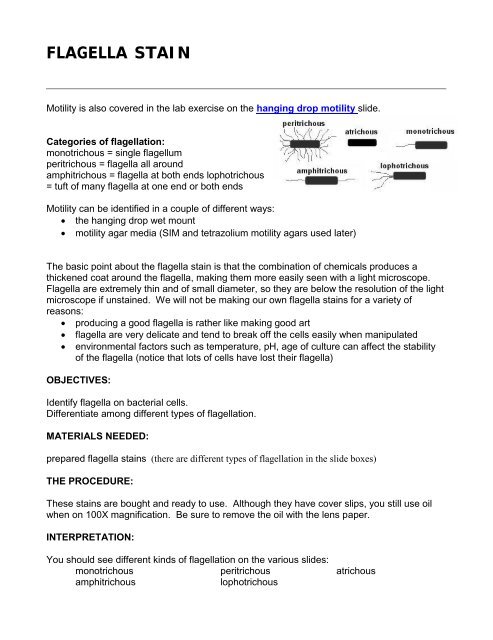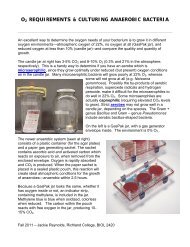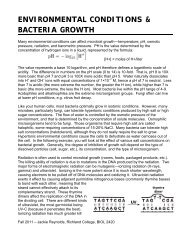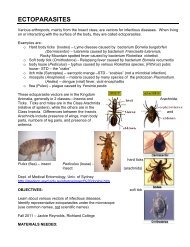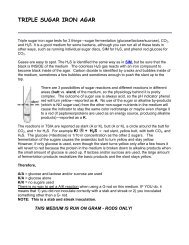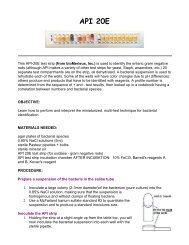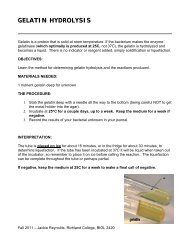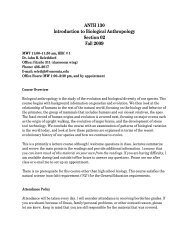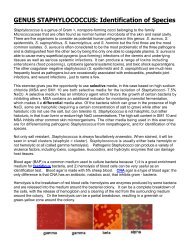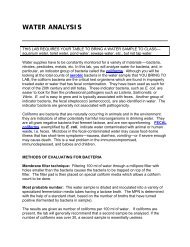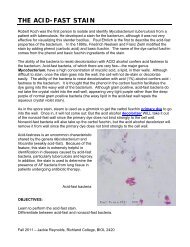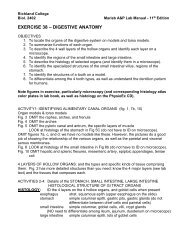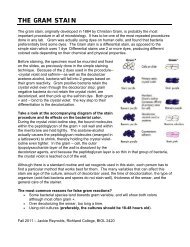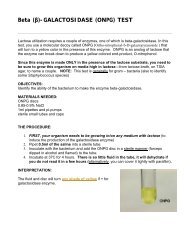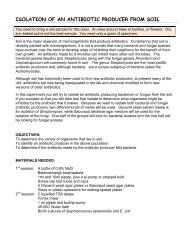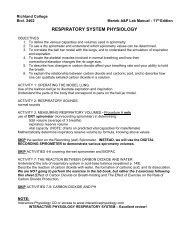FLAGELLA STAIN
FLAGELLA STAIN
FLAGELLA STAIN
Create successful ePaper yourself
Turn your PDF publications into a flip-book with our unique Google optimized e-Paper software.
<strong>FLAGELLA</strong> <strong>STAIN</strong><br />
Motility is also covered in the lab exercise on the hanging drop motility slide.<br />
Categories of flagellation:<br />
monotrichous = single flagellum<br />
peritrichous = flagella all around<br />
amphitrichous = flagella at both ends lophotrichous<br />
= tuft of many flagella at one end or both ends<br />
Motility can be identified in a couple of different ways:<br />
the hanging drop wet mount<br />
motility agar media (SIM and tetrazolium motility agars used later)<br />
The basic point about the flagella stain is that the combination of chemicals produces a<br />
thickened coat around the flagella, making them more easily seen with a light microscope.<br />
Flagella are extremely thin and of small diameter, so they are below the resolution of the light<br />
microscope if unstained. We will not be making our own flagella stains for a variety of<br />
reasons:<br />
producing a good flagella is rather like making good art<br />
<br />
<br />
flagella are very delicate and tend to break off the cells easily when manipulated<br />
environmental factors such as temperature, pH, age of culture can affect the stability<br />
of the flagella (notice that lots of cells have lost their flagella)<br />
OBJECTIVES:<br />
Identify flagella on bacterial cells.<br />
Differentiate among different types of flagellation.<br />
MATERIALS NEEDED:<br />
prepared flagella stains (there are different types of flagellation in the slide boxes)<br />
THE PROCEDURE:<br />
These stains are bought and ready to use. Although they have cover slips, you still use oil<br />
when on 100X magnification. Be sure to remove the oil with the lens paper.<br />
INTERPRETATION:<br />
You should see different kinds of flagellation on the various slides:<br />
monotrichous peritrichous atrichous<br />
amphitrichous<br />
lophotrichous
QUESTIONS:<br />
1. Draw an example of an amphitrichously flagellated bacillus-shaped bacterium.<br />
2. What designation does one used for a bacterium without flagella?<br />
Fall 2011, Jackie Reynolds, Richland College, BIOL 2421


